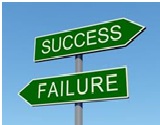|
 |
|
 |
|
|
||
Core competencies
Core competencies are... Skills and technologies that enable an organization to satisfy its customers better than its competitors. Examples of core competencies are: • Boeing – jet technology (e.g. 747). • Sony – miniaturization (e.g. PlayStation). • Apple – innovation and design (e.g. iPod). • Coca-Cola (pictured right) – marketing of its brand. • BMW – engineering. The term core competencies was created by two business professors, Gary Hamel and C.K. Prahalad in their book, Competing for the Future (1994). An alternative name is “distinctive capabilities” used by the Scottish professor, John Kay. A resource based strategy fully exploits an organization’s core competencies.
How to create a core
competency
1. Put customers first Core competencies must provide benefits to present and future customers better than competitors (for example, James Dyson’s ,pictured right, engineering skills that invented the bagless vacuum cleaner).
2. Be creative and innovative Core competencies give customers new solutions to their problems now and in the future, being a “gateway to tomorrow’s markets” (say Hamel and Prahalad).
3. Corporate culture and employees Core competencies are created by innovative, customer driven employees. Employees must have:
4. Look at your 7 S’s Core competencies come from what you’re good at, so they will be found in the organization’s 7 S’s:
Key quotes explained
“Every organization needs one core competency: innovation”, - Peter Drucker (American management writer, pictured right). This reflects Drucker’s view in his book, The Practice of Management (1954) that an organization’s most important activities are:
Drucker also said that great companies “get their strengths together and make their weaknesses irrelevant”.
“Character cannot replace competence”, - Max De Pree (American boss, pictured right) Do something brilliantly (competence) but also do what’s right (character). “Ability without honour is useless”, said the Roman philosopher, Cicero.
“Opportunism without competence is a path to fairyland”, - Kenneth Andrew (American management professor, pictured right) An organization must not only identify market opportunities but also have the ability to exploit them better than competitors. “Ability is nothing without opportunity”, Napoleon said.
Best books
Gary Hamel (pictured right) and C.K. Prahalad (pictured below), Competing for the Future (1994) Core competencies should gain entry to a wide variety of markets, significantly increase value for customers and
be difficult for companies to imitate. They result from a long period of continuous improvement (usually over 10 years). (see for more detail Competing for the Future in the Business Books section)
John Kay (pictured
right), Foundations of Corporate Success (1994) Business success comes from applying “distinctive capabilities” in a particular market that competitors don’t have. These come from innovation and effective long-term relationships with customers, employees and suppliers that give the organization brand loyalty and an excellent reputation. (see for more detail Foundations of Corporate Success in the Business Books section) |
|
|
||
|
|
||
| Copyright © wisdomtowin.com 2025 All Rights Reserved | ||
|











